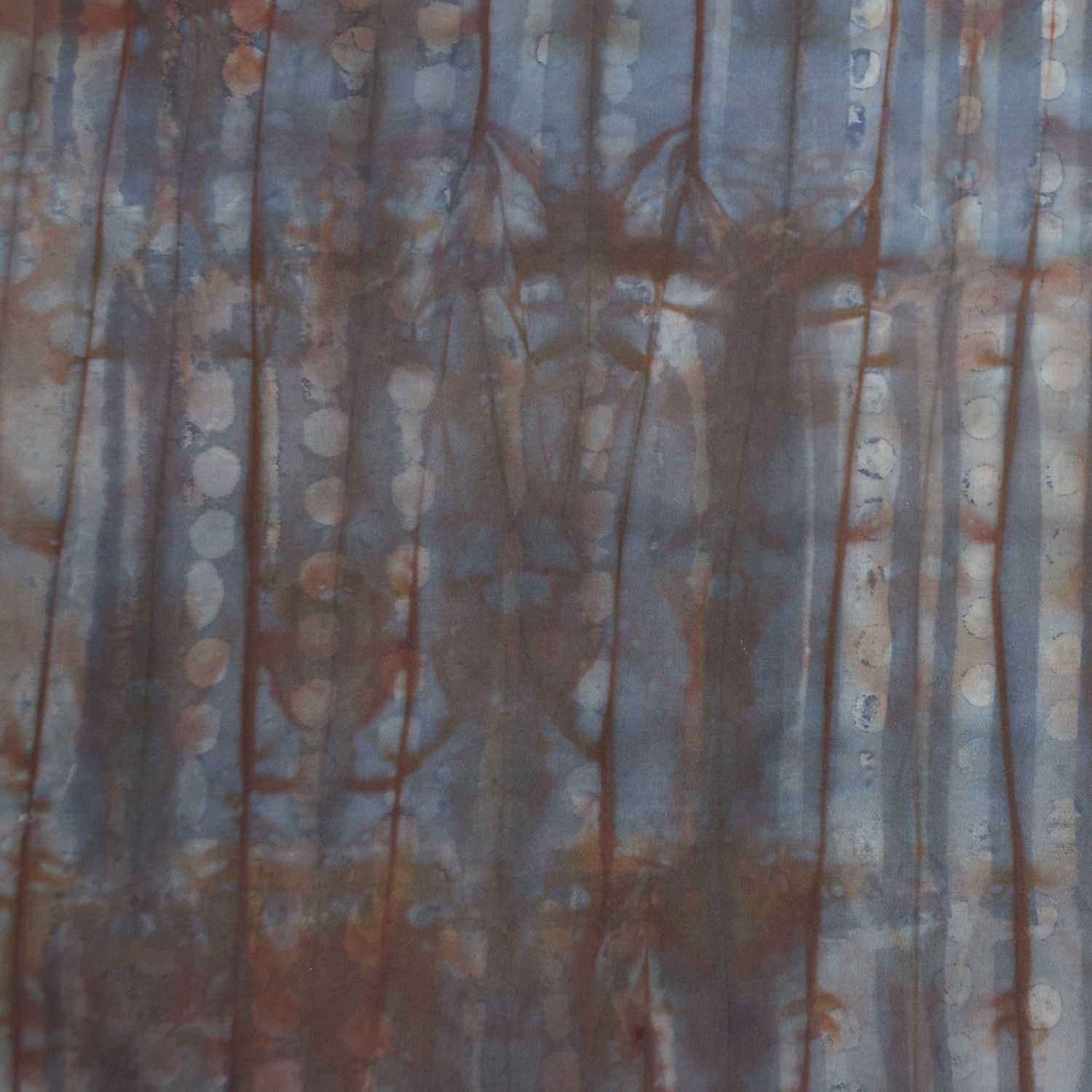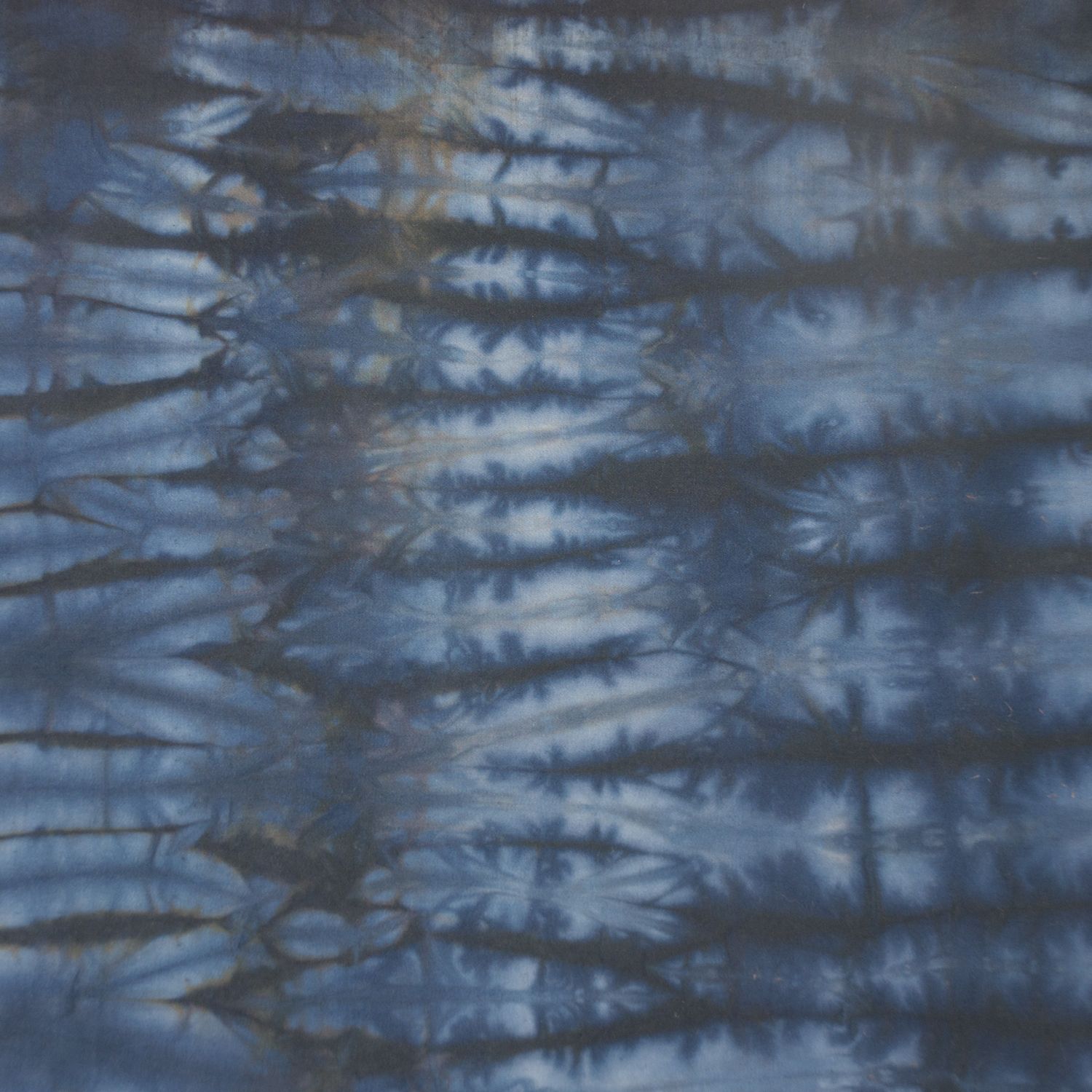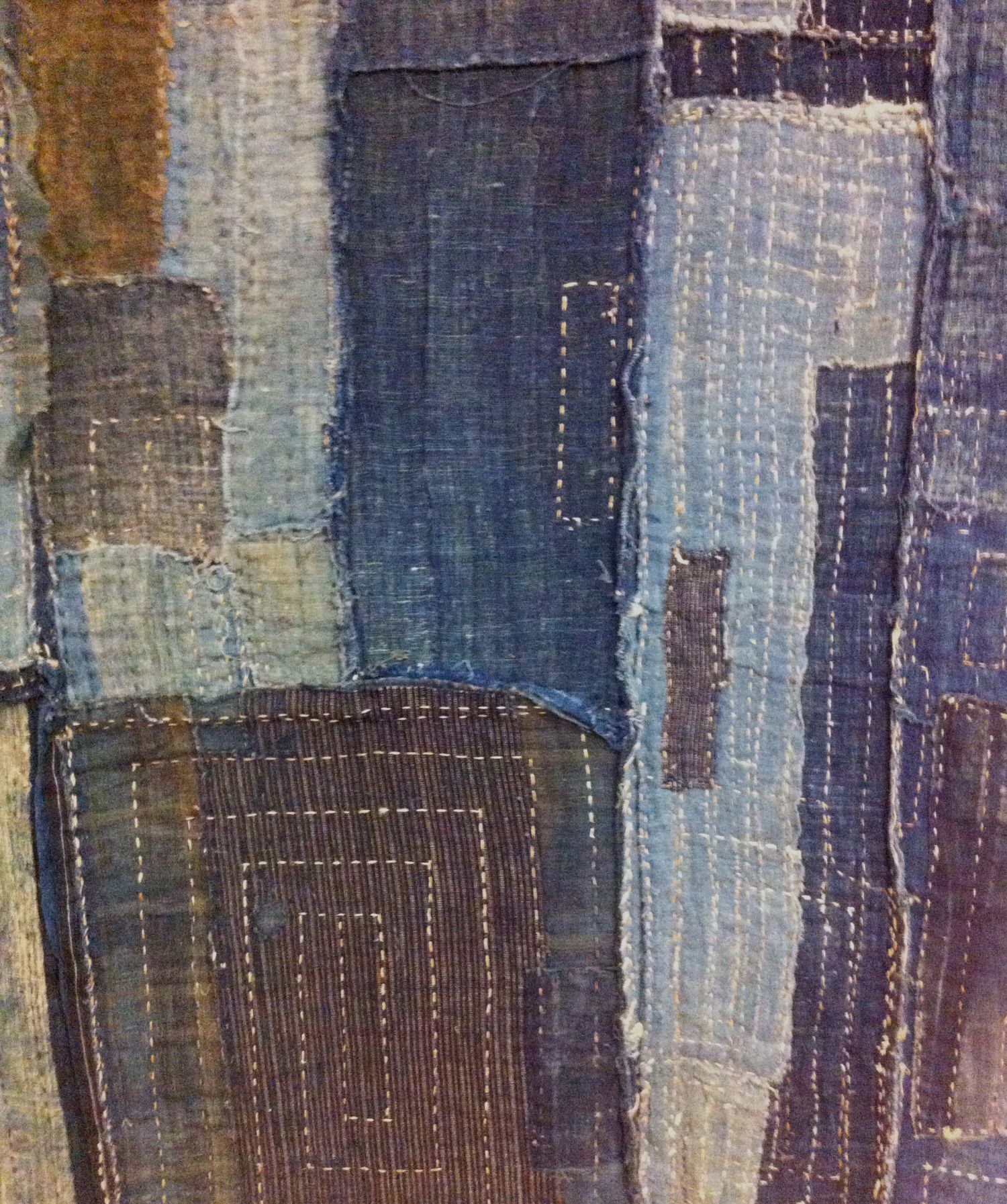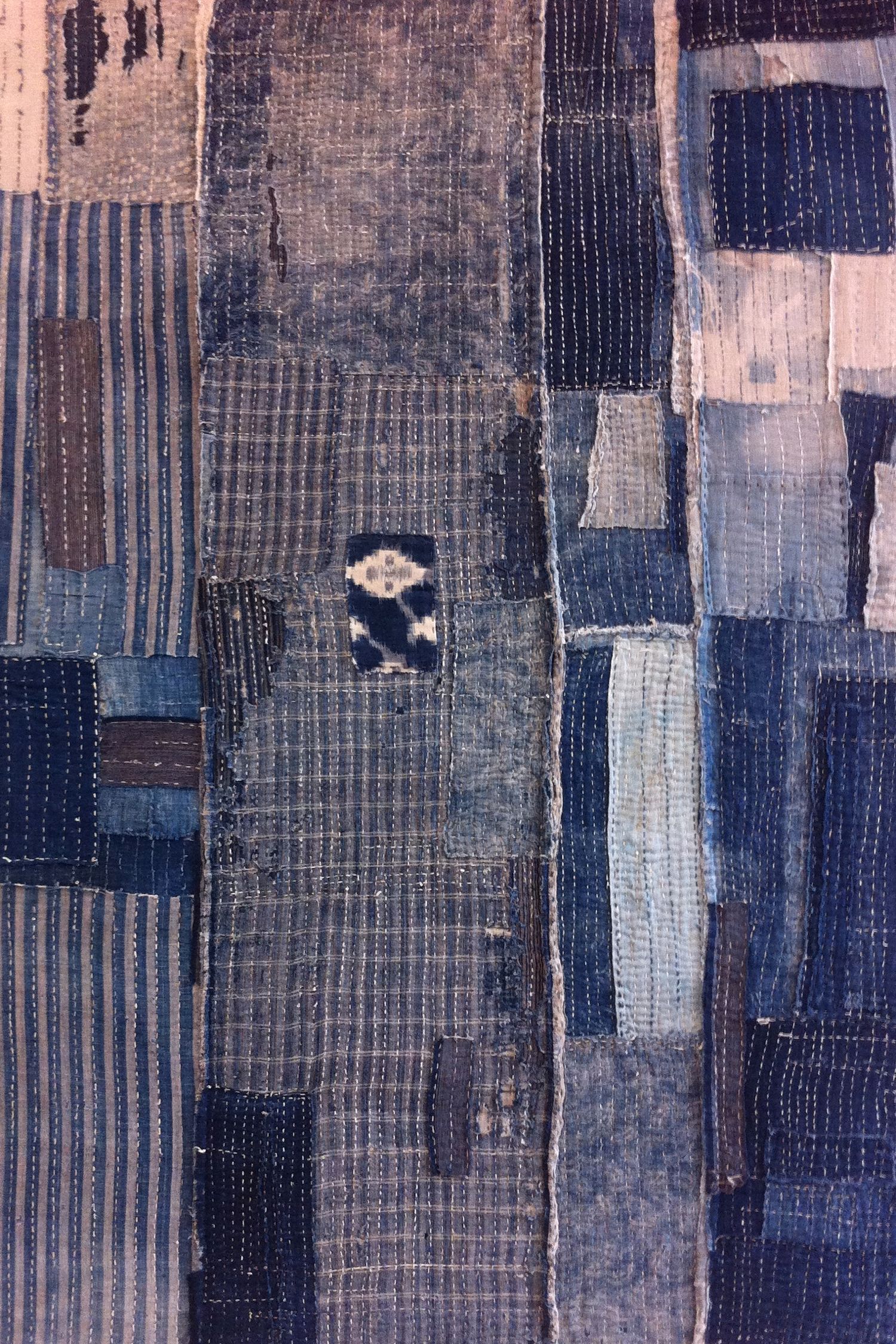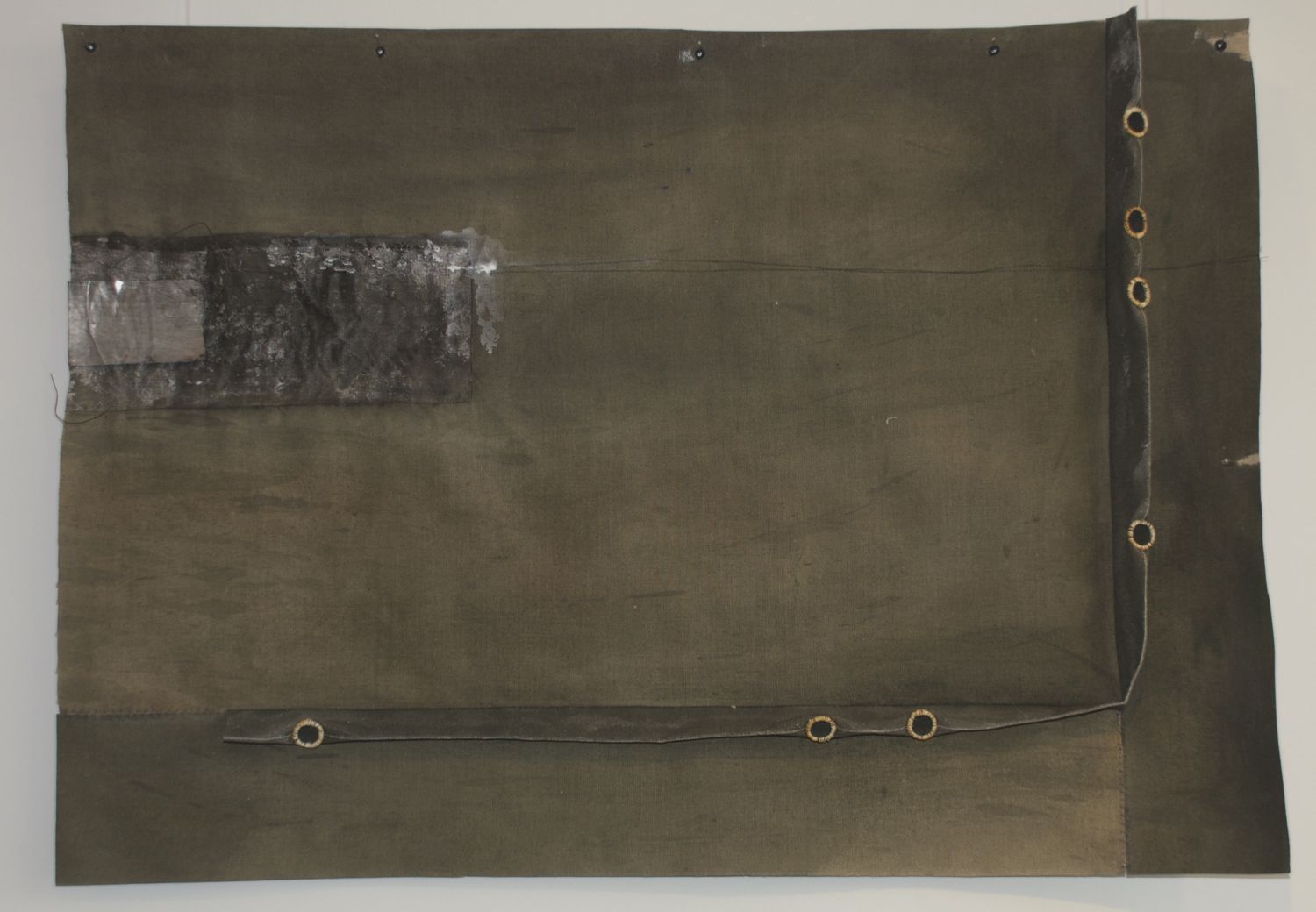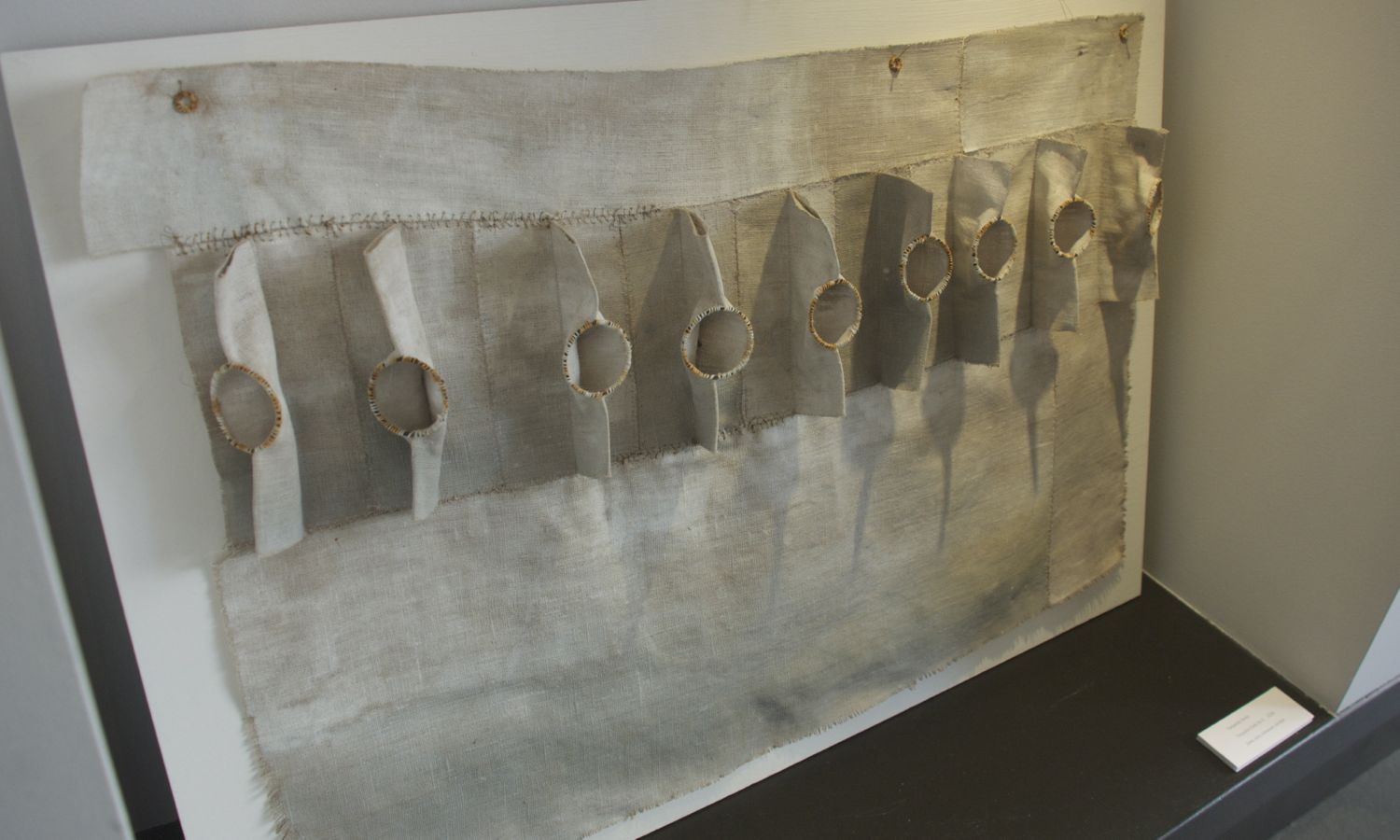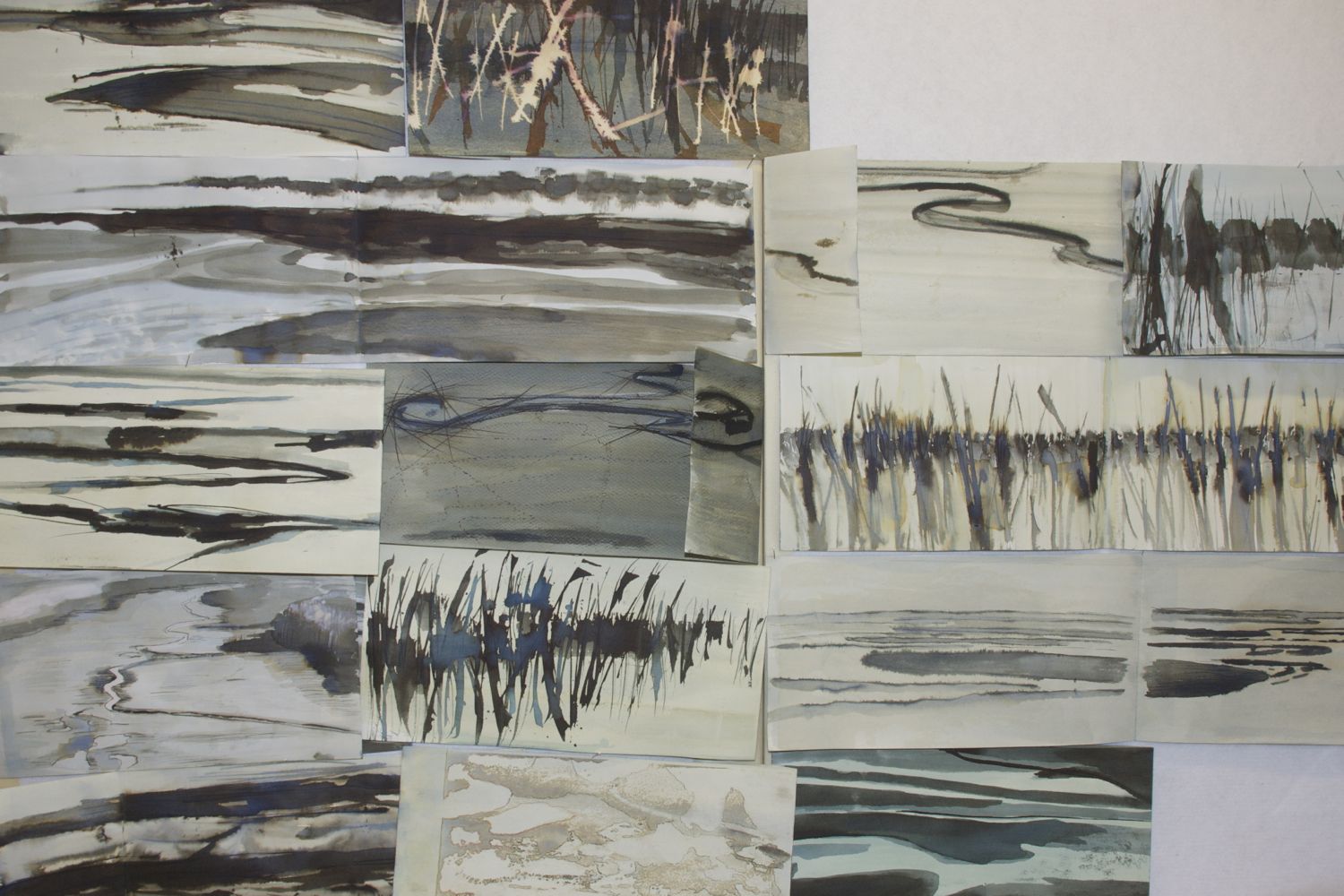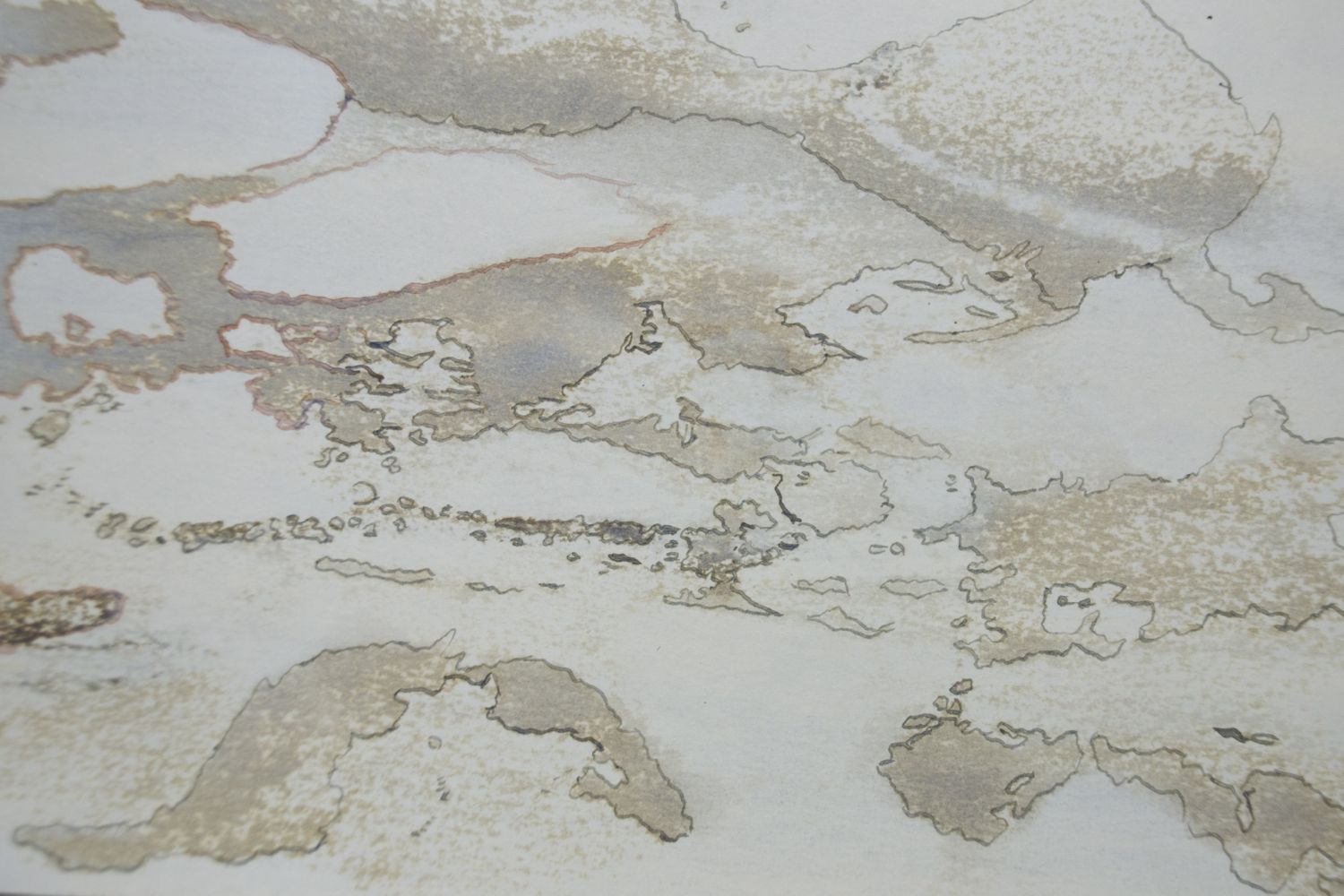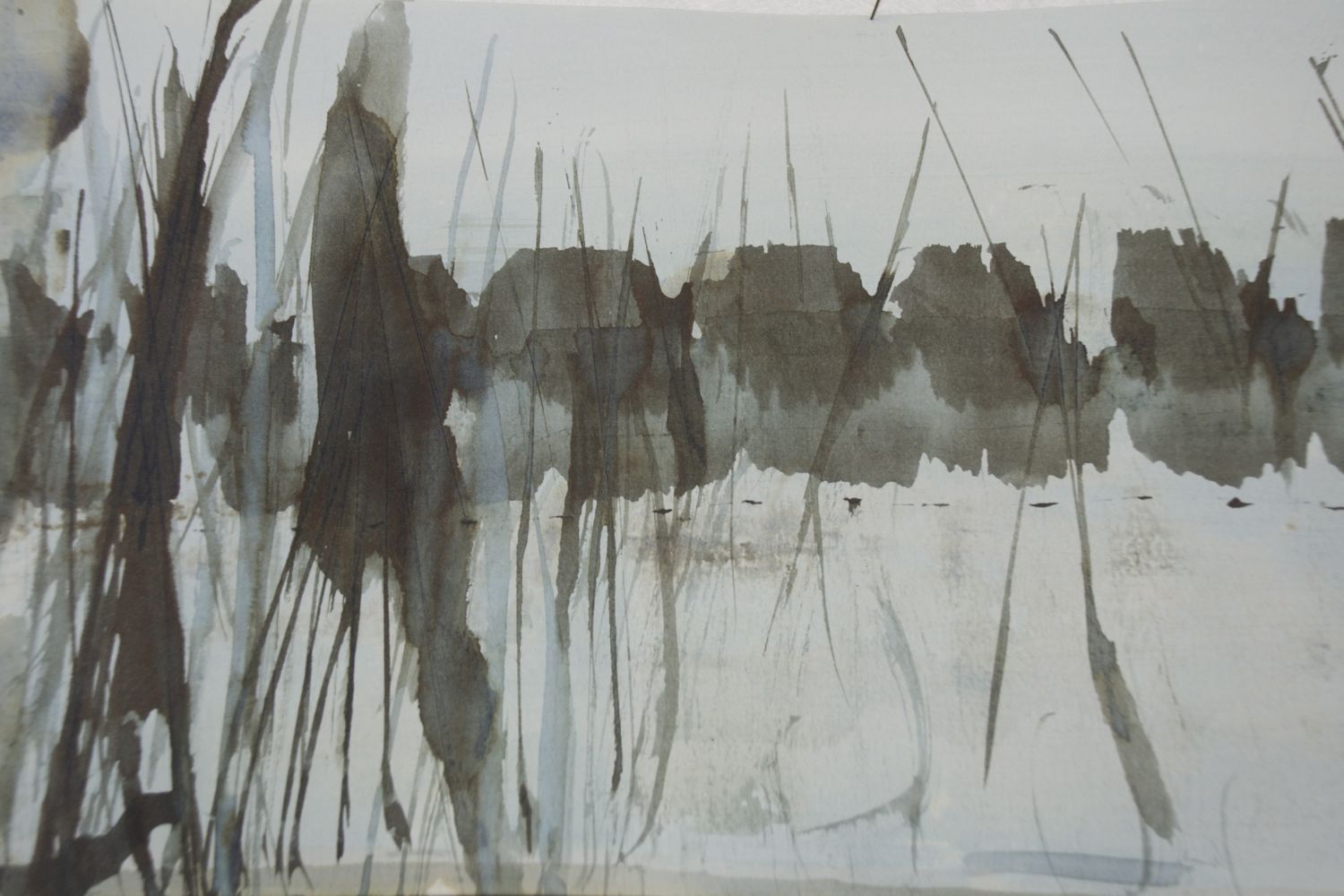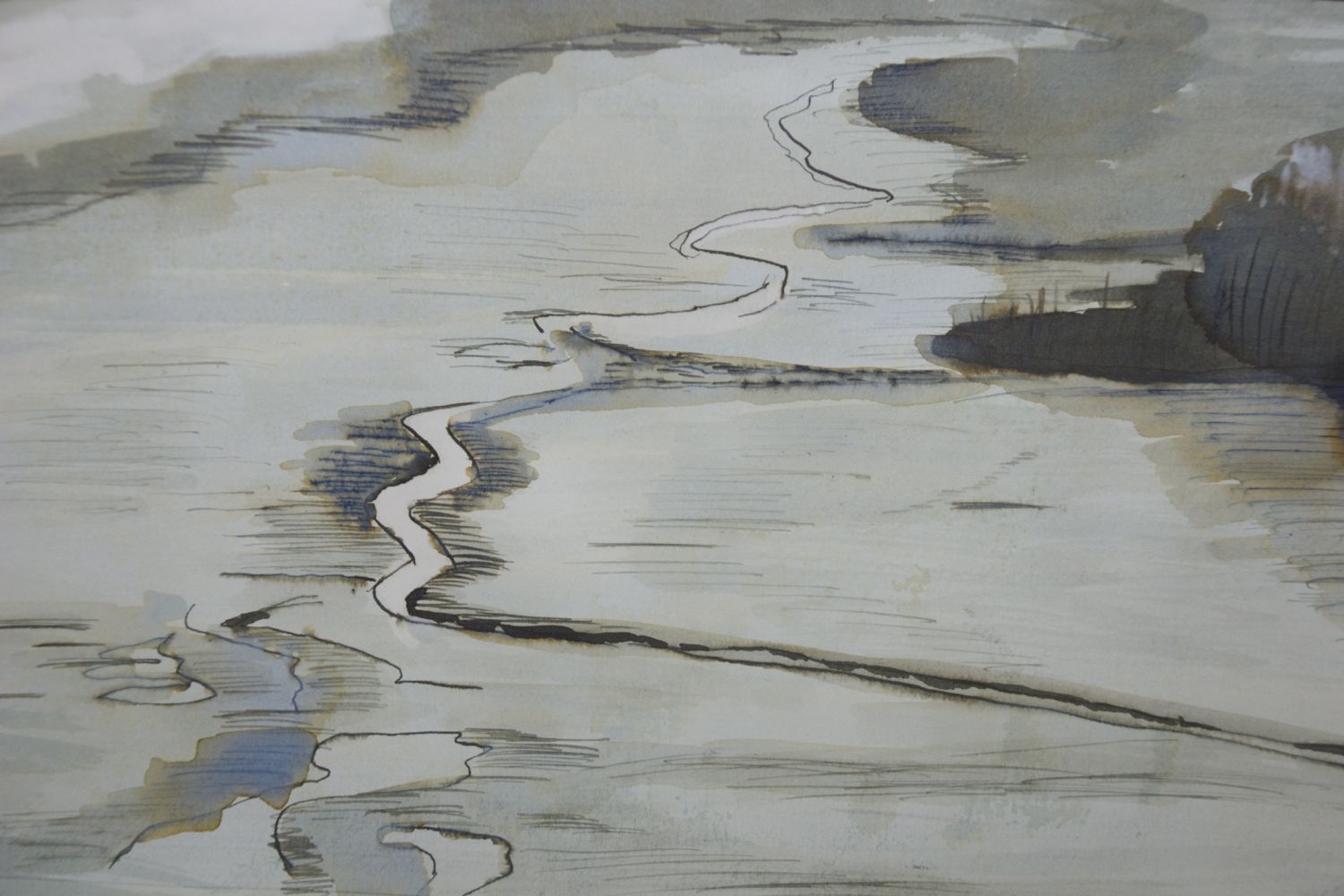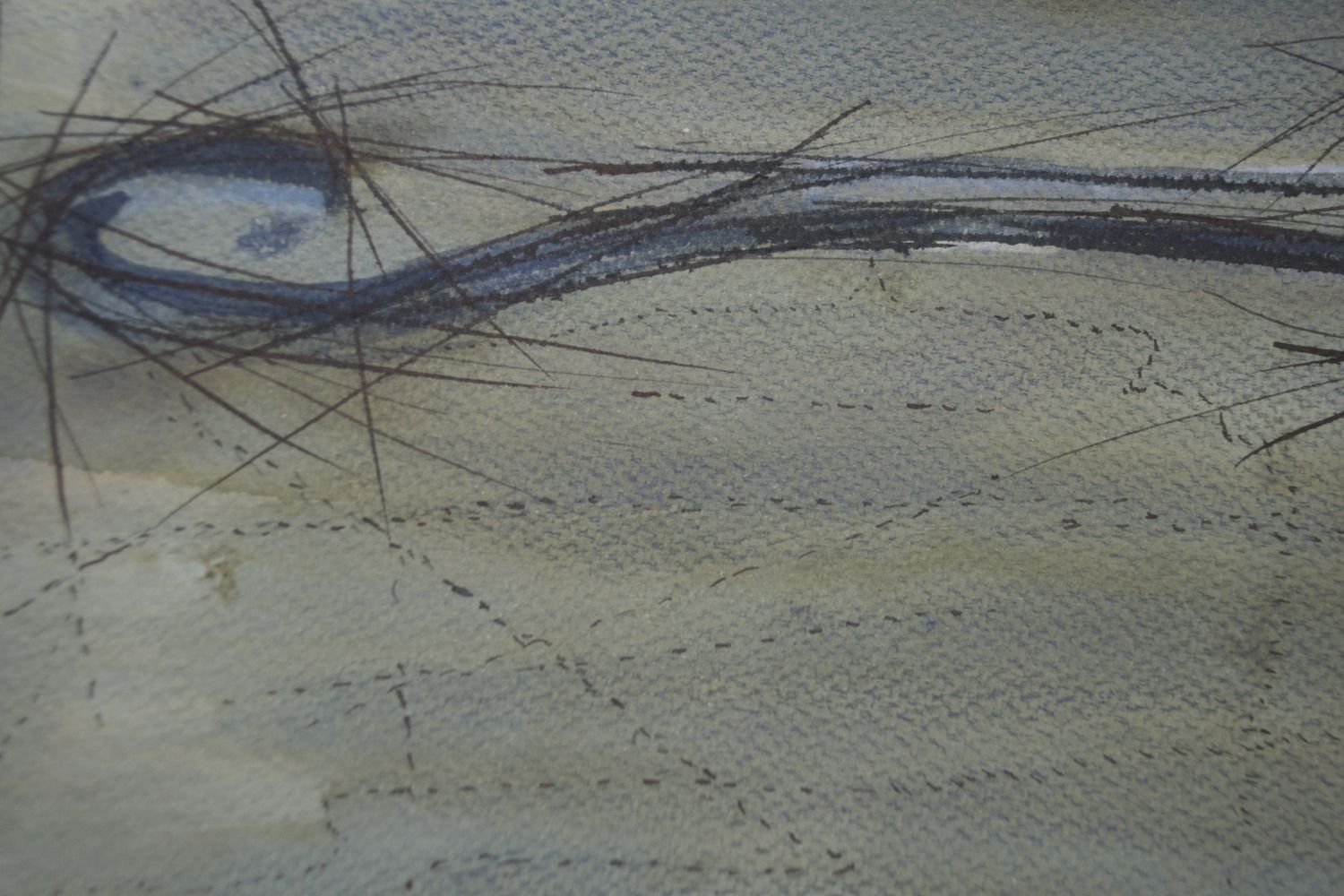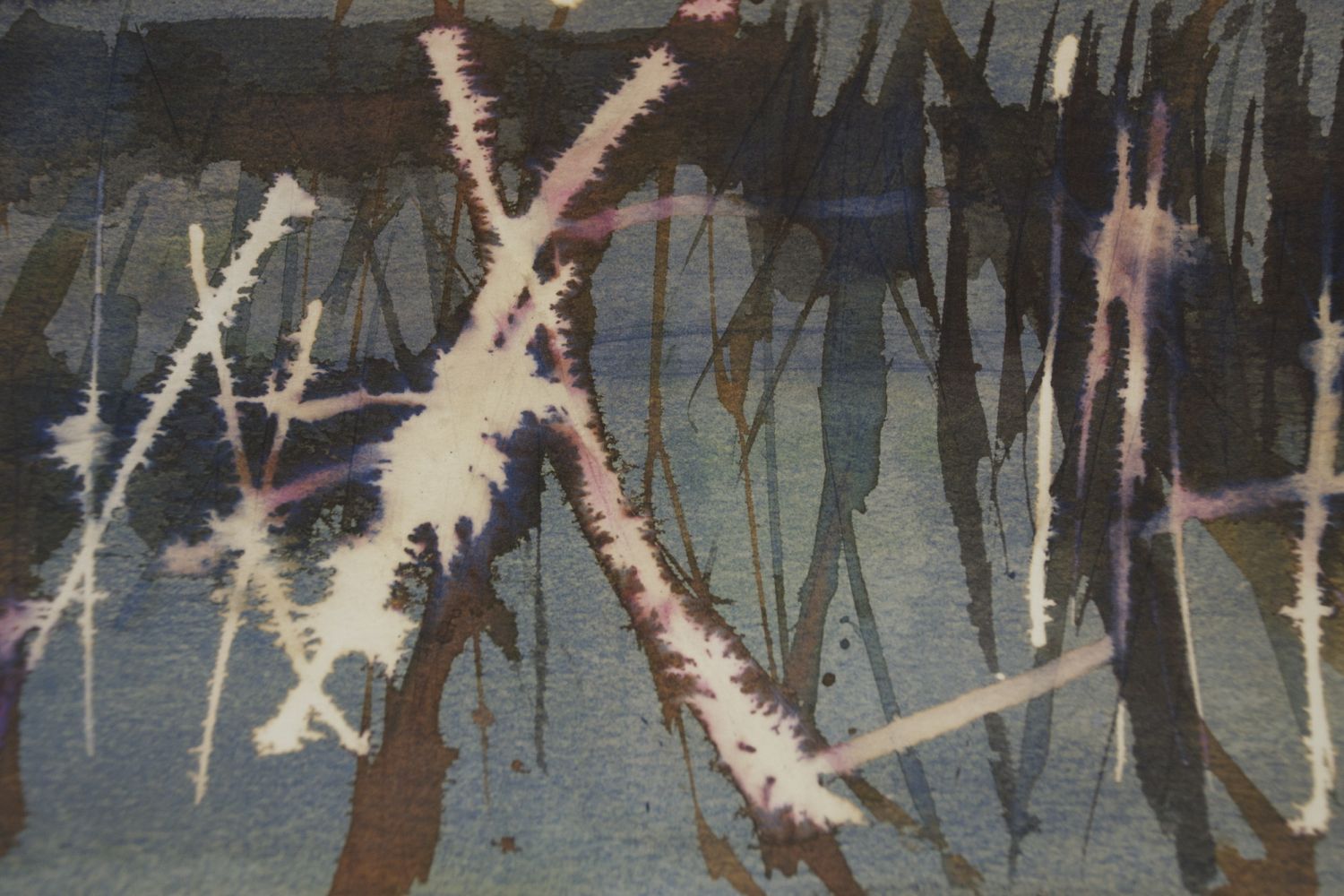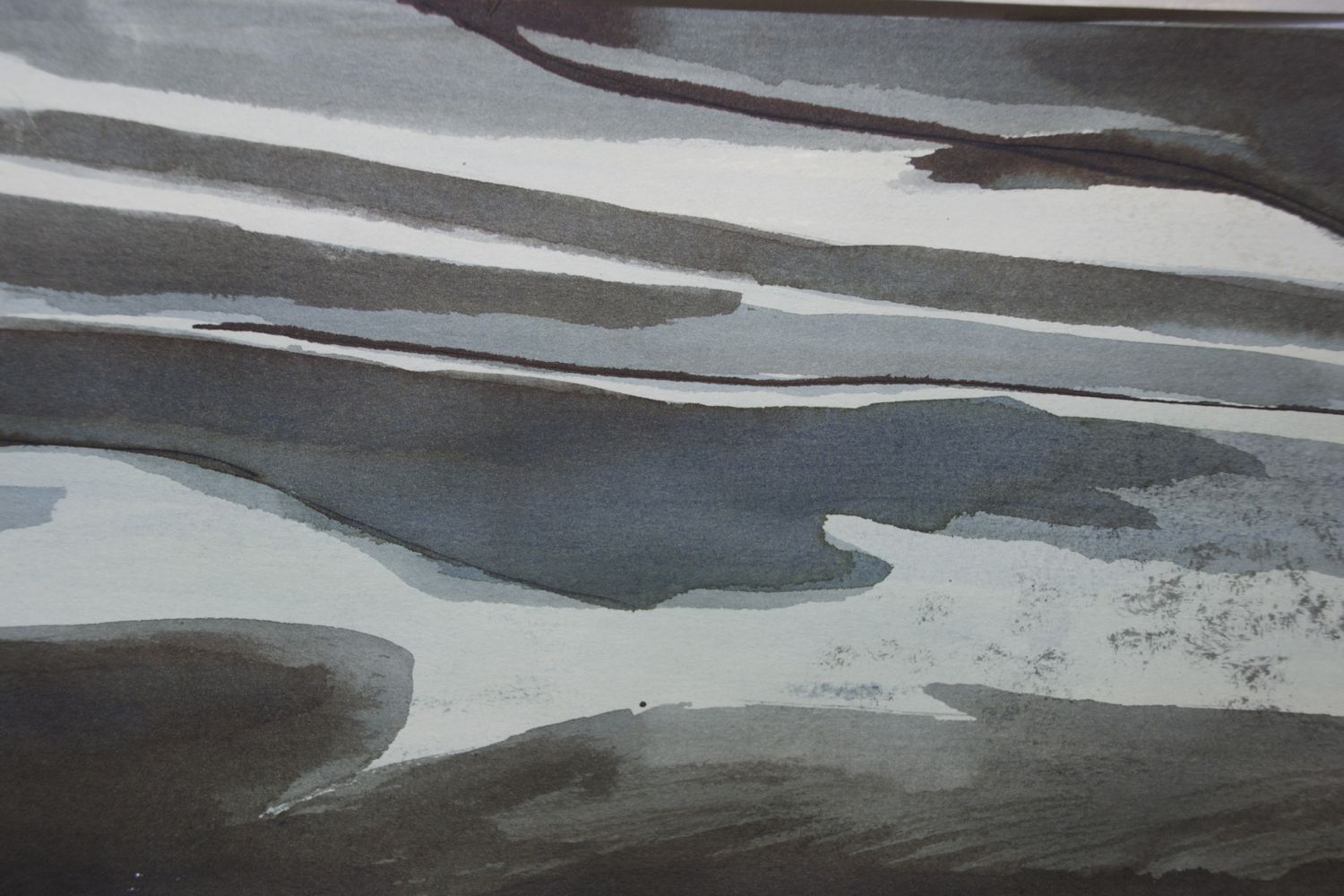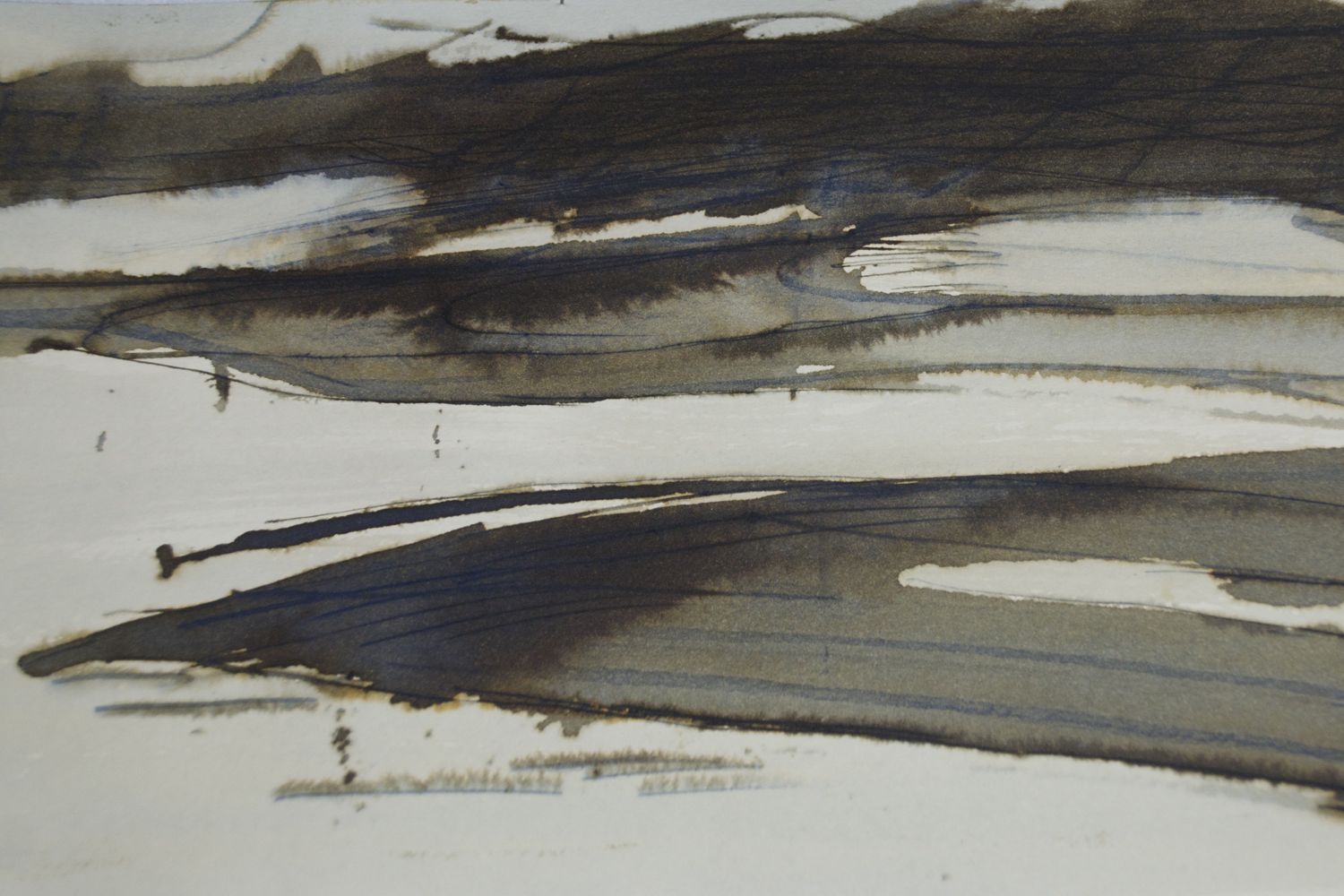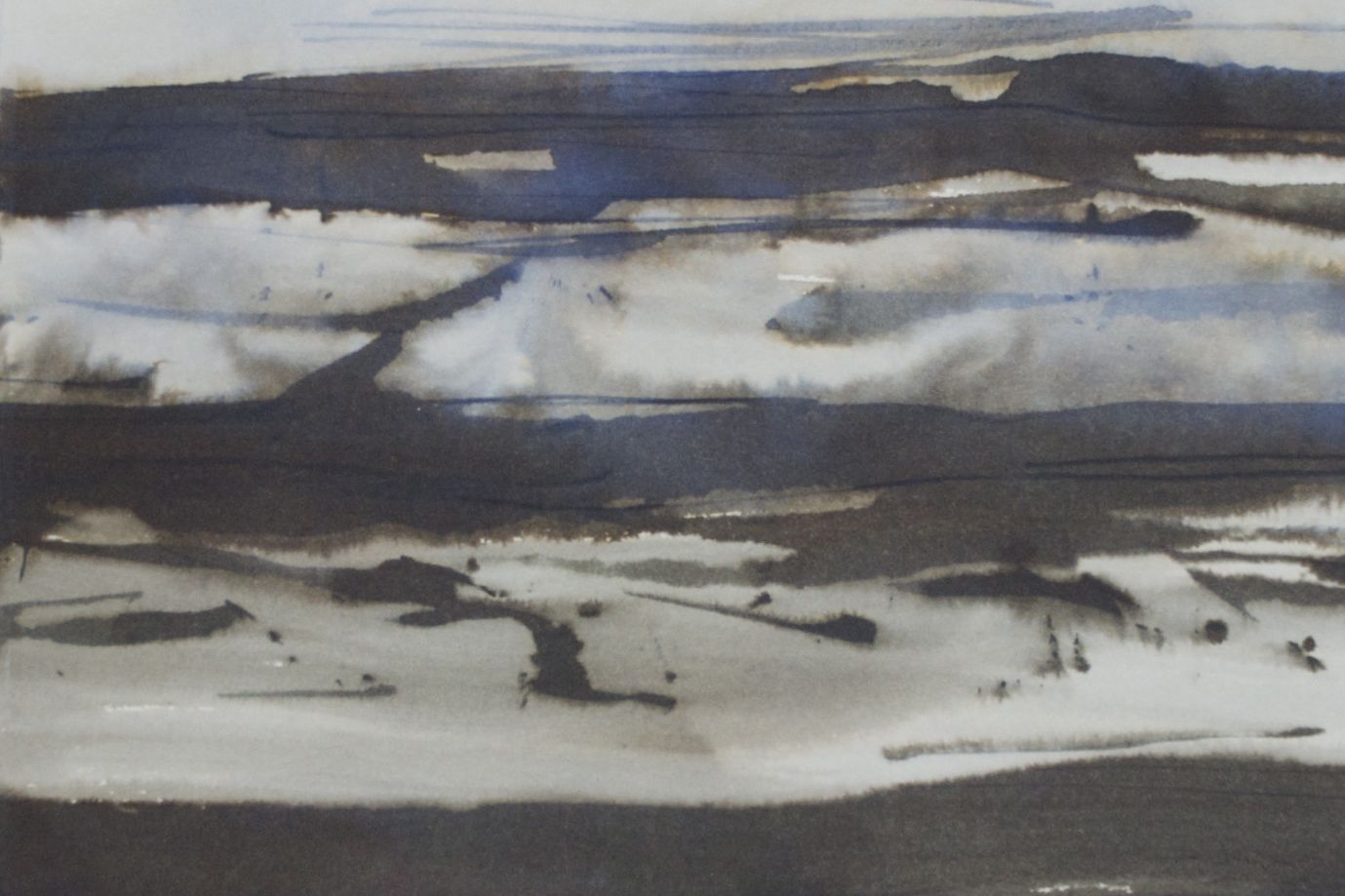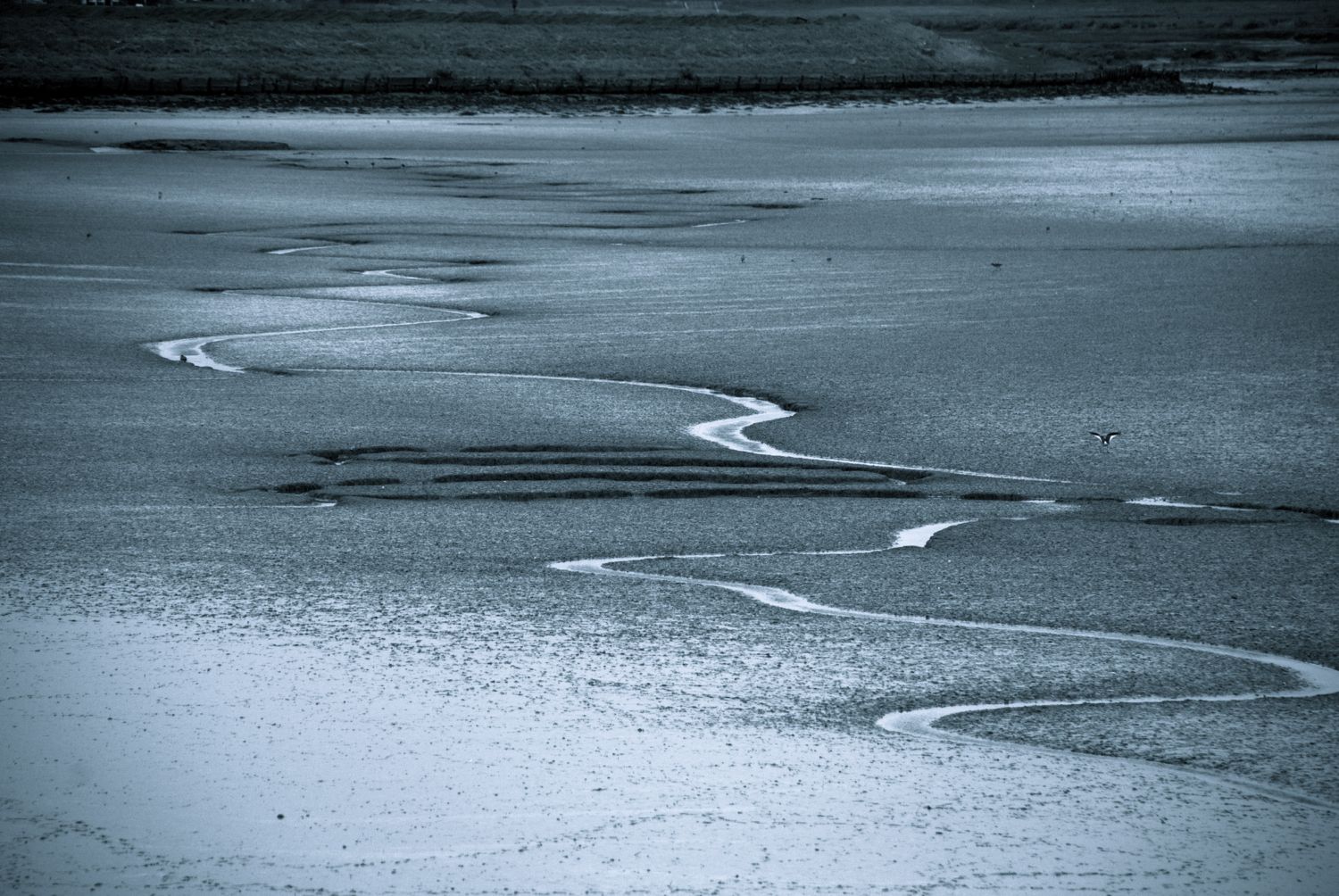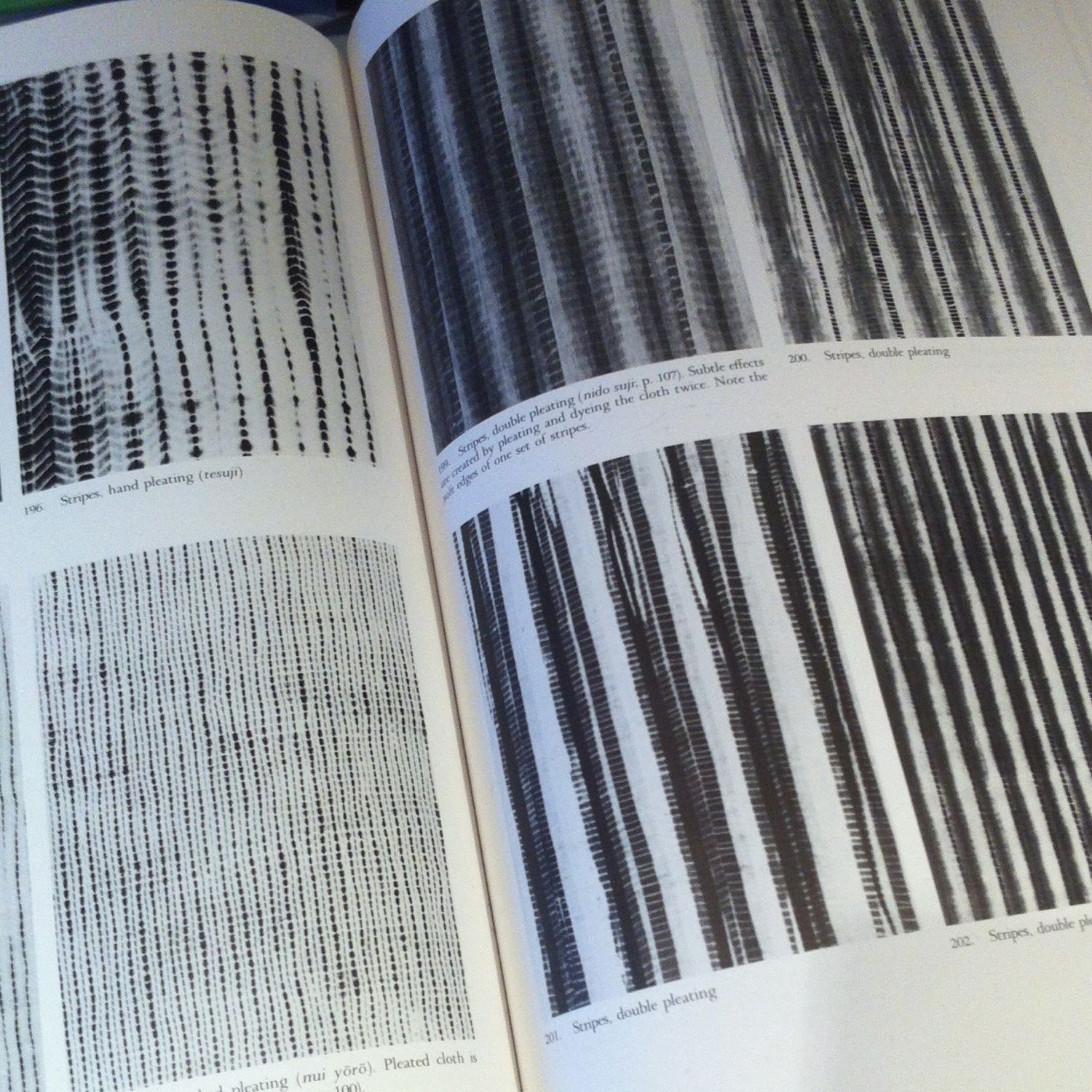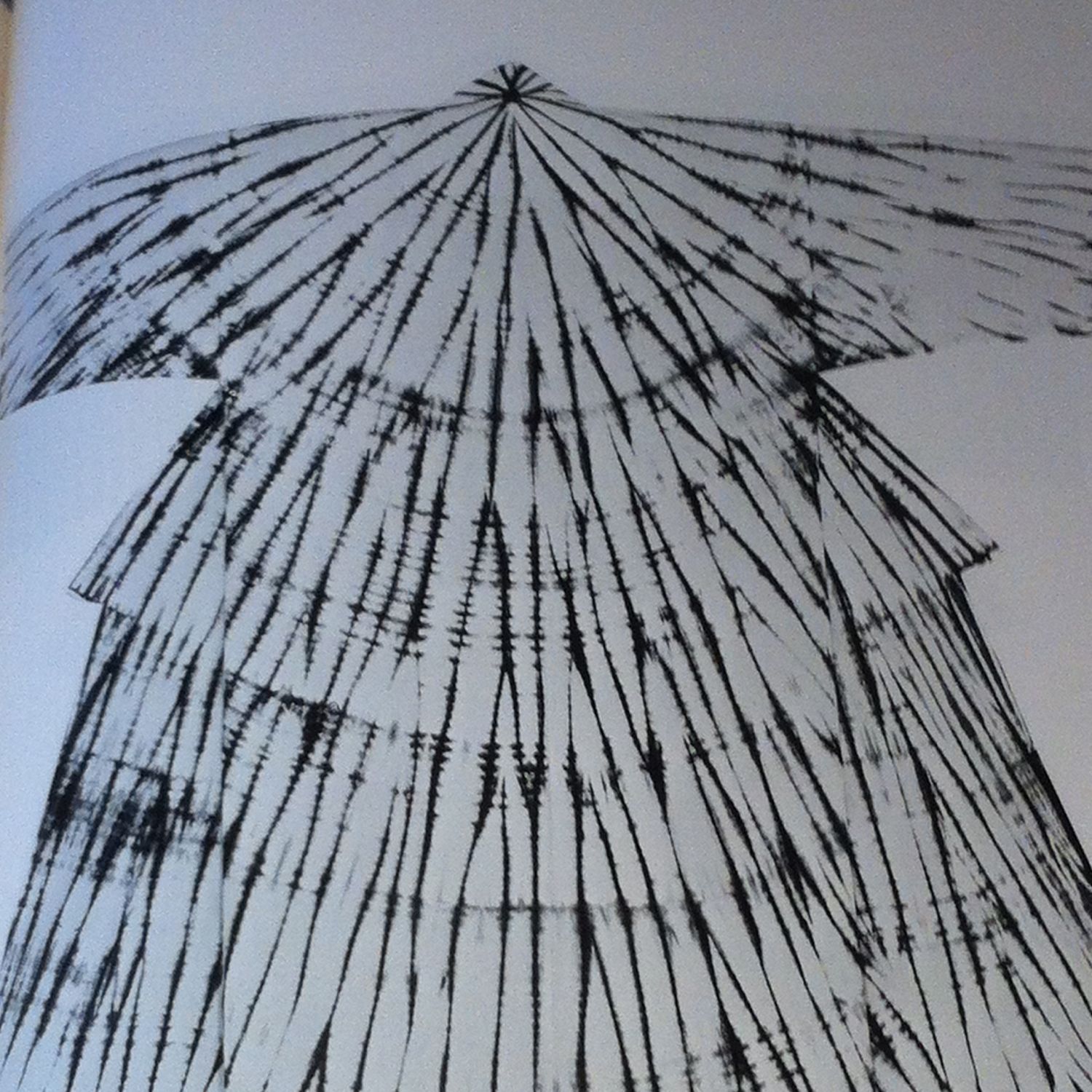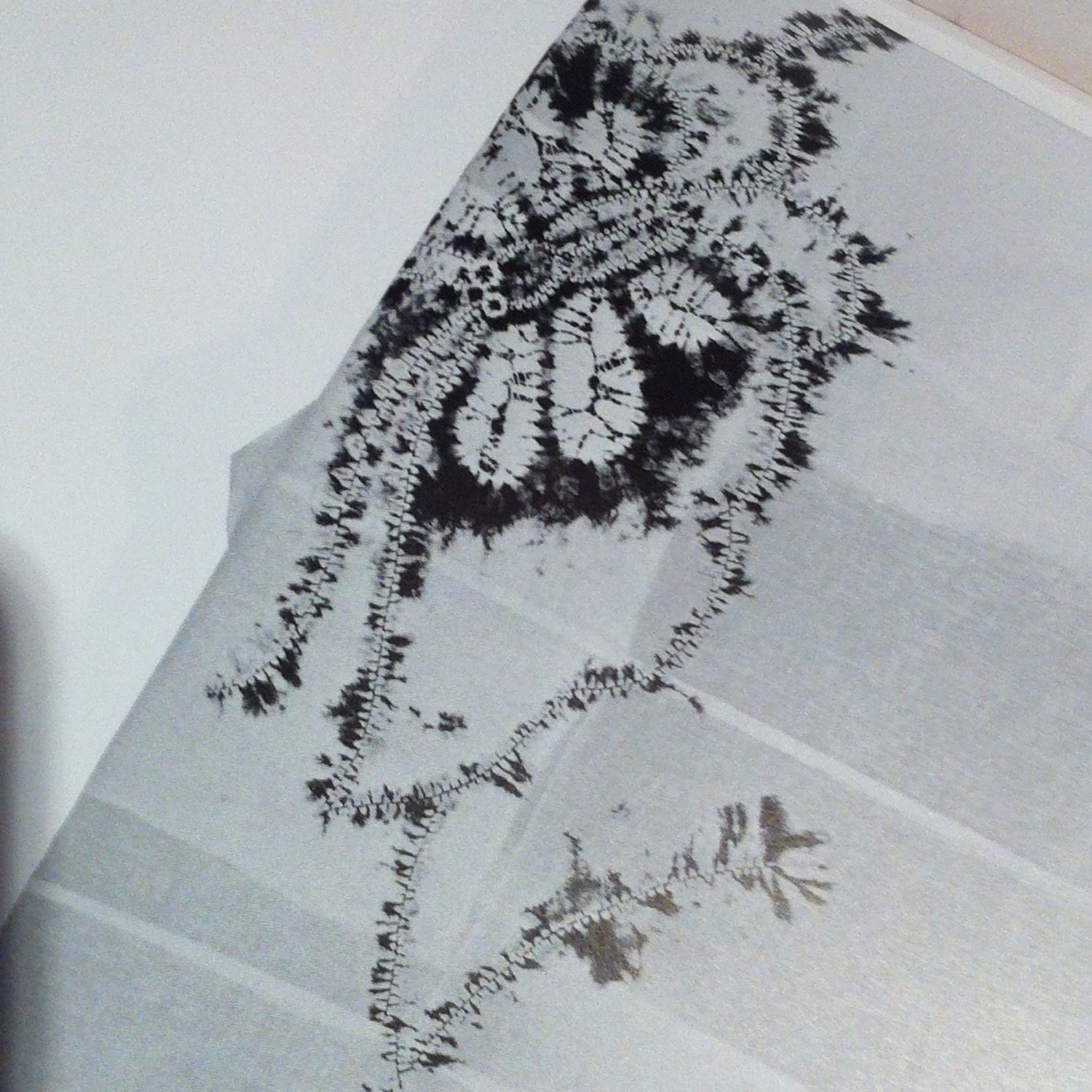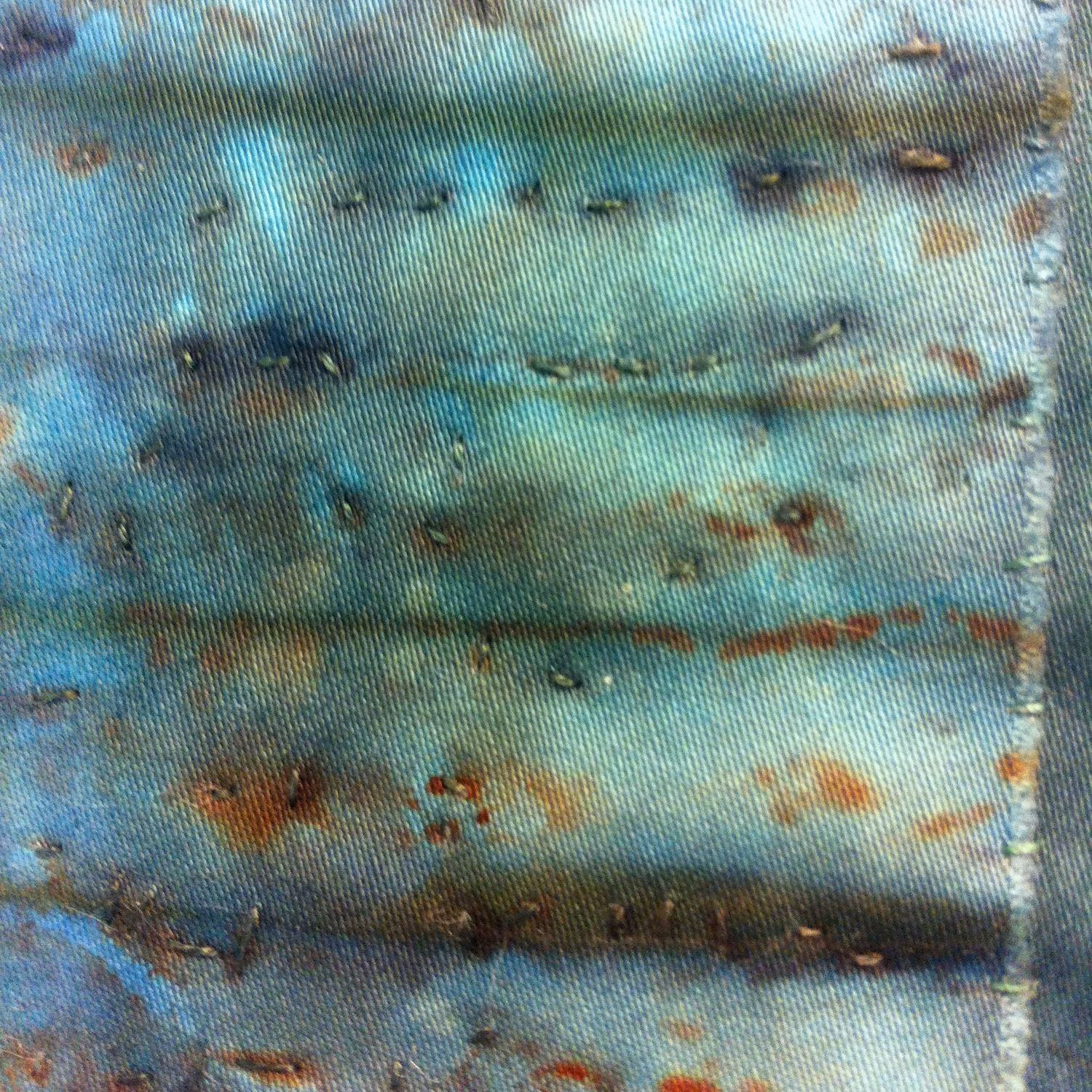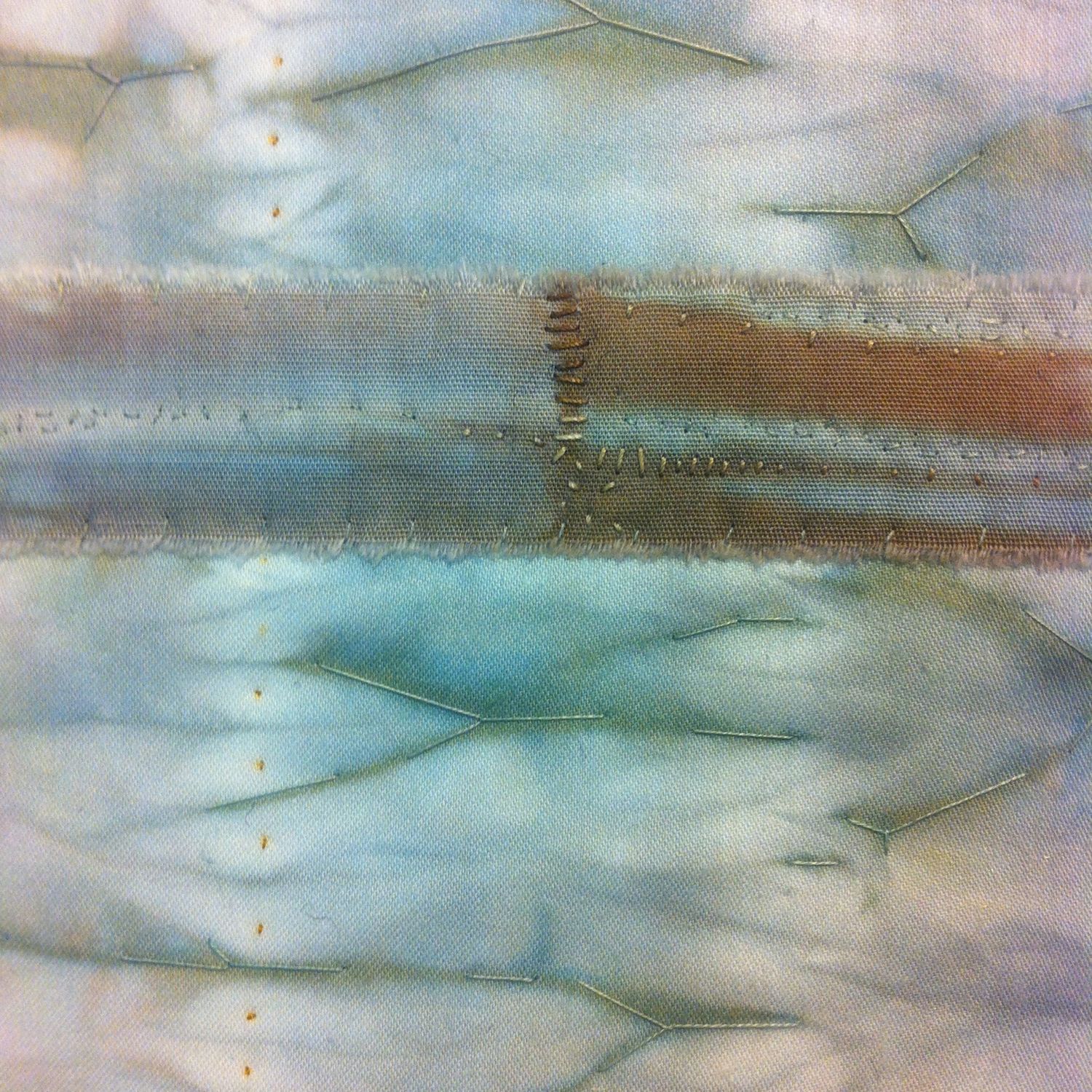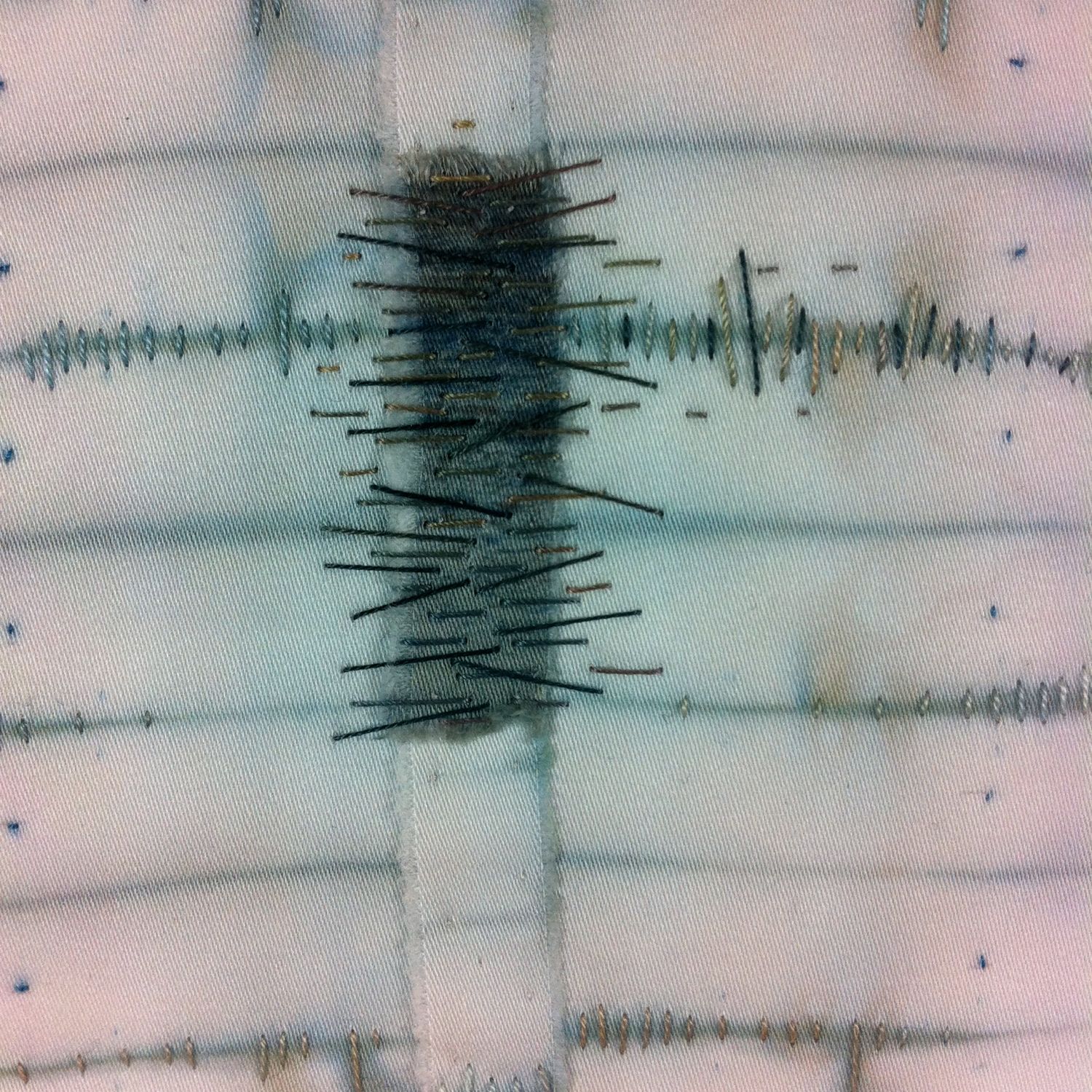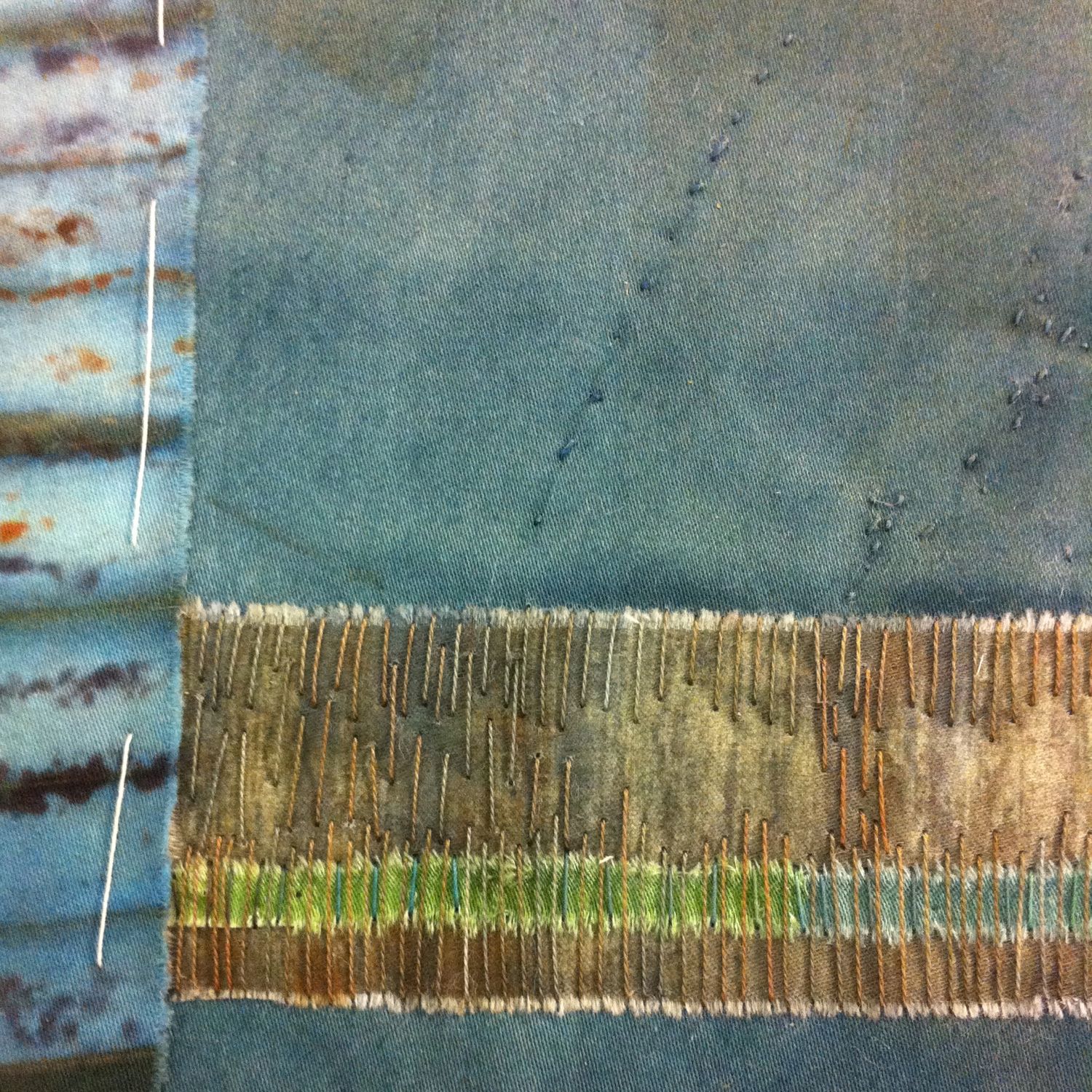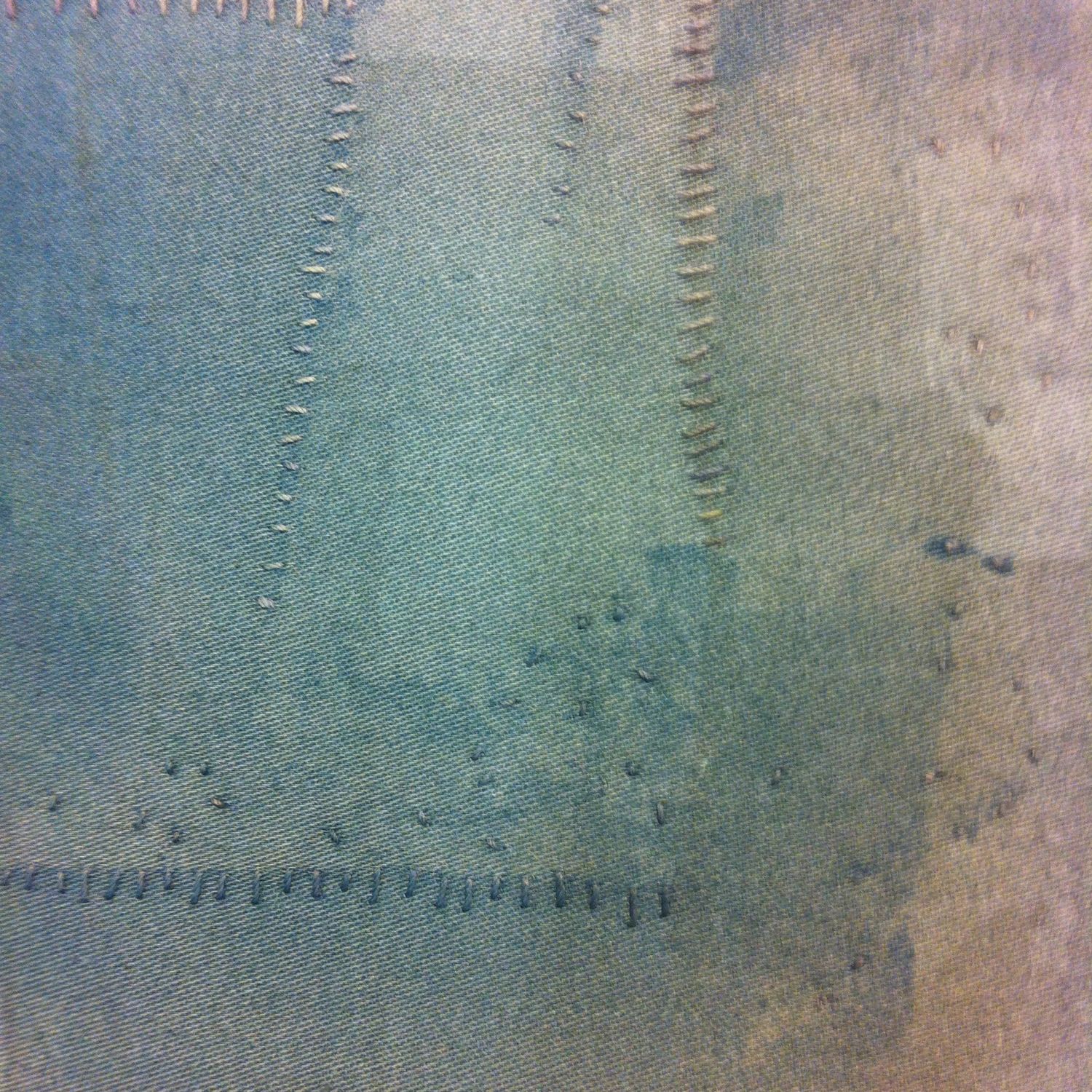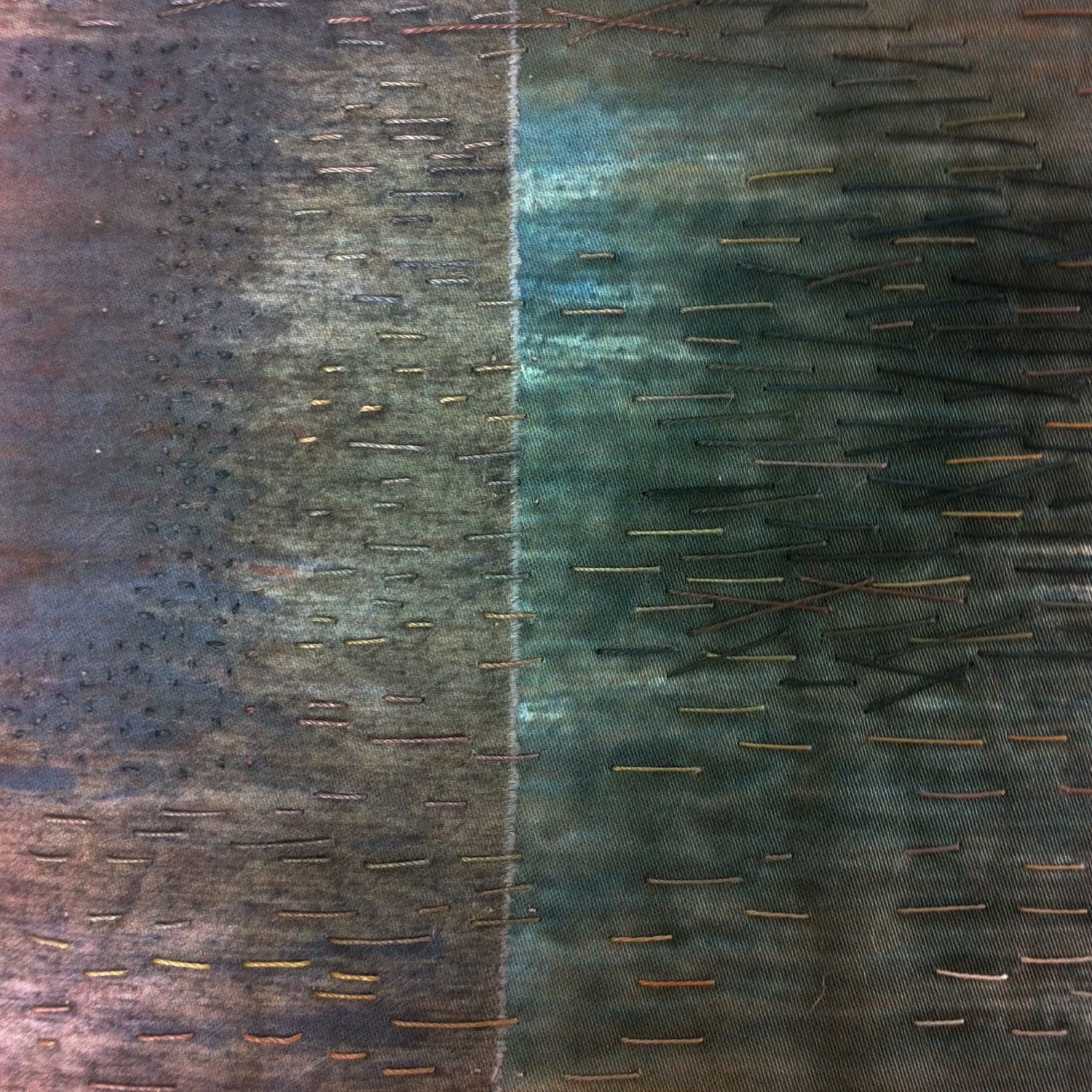I have been in stitch mode for a while. I have finished several new pieces of work for Bircham Gallery and have more work ready to stitch in the studio. Work is flowing well at the moment so I'm making the most of this. Never know how long it will last ...
Over these blue mountains
I think I have a new favourite piece. Over these blue mountains was all about edges. Lots of minute stitching. I felt as though I was conjuring the forms of the mountains out of the marks left by the dye on the cloth. Two posts back I reflected on how the marks on my flints have their own cause, but when I look at them I interpret them in certain ways according to my own memory and experience of similar marks. And now I found myself following the same process with the marks on the cloth - their true origin relates to dye chemistry and application but through selecting and emphasising specific edges and marks over others I was drawing out their resemblance to something else.
In the top and bottom sections, stitching became a game of defining and dissolving edges. In some places lines of stitch hold down actual cloth edges; in others they merely create the illusion of an edge. I was making decisions every time I selected a thread colour, placed a stitch or ended a line as to where the "edges" were and whether they were strong or faint. Sometimes I was following marks in the cloth so indistinct that even I was not sure whether they were really there.
It dawned on me that I was playing directly with Tim Ingold's distinction between traces and threads. Ingold argues that most lines can be classified as one or the other. "A thread is a filament ... that can be entangled with other threads or suspended between points in three-dimensional space. ... threads have surfaces, however they are not drawn on surfaces." In contrast "the trace is any enduring mark left in or on a solid surface by a continuous movement."
I was using the traces left by dye on the cloth as a guide to where to place lines that I was making with a continuous thread. And while I was focusing on what was happening on the front - the way the stitches were interacting with the dye marks - something else was happening on the back. My thread was marking its pathway across the cloth with another pattern of stitches, livelier and more random than the carefully considered choices I was making on the front. Conscious, deliberate decisions on one side; unconscious, accidental effects underneath - but each a direct consequence of the other. It's a pathway - in the sense that it traces a route - but it's different from the line we would mark with our feet or draw on a map because it's marking the spaces / movement between each stitch / step rather than the steps themselves.
I like the freedom and liveliness of these accidental stitches and I'm pondering ways of recreating the effect. If I simply turn the cloth over, I will lose a lot of control over how each stitch relates to the marks on the cloth. If I copy the pattern of the stitches on the back, they will lose some of their spontaneity. This is interesting in itself! Need to experiment with this.
If this seems a particularly introspective post, this is how it is with me when I am stitching. While I am very focused on what I am doing, my mind is free to reflect. I think this is why I prefer hand stitch. It is a physical process that keeps the mind engaged in a way that's different to when I sew with a machine. Each stitch is an individual decision but there is time for the mind to explore different trains of thought. It is when I am stitching that I spend the longest period with each individual piece (and this is usually when I work out what to call it). I notice things I didn't see when I constructed the piece, new ideas emerge, new links and associations are made and I come up with new things I want to try.
More on Tim Ingold's thinking on lines here.














































